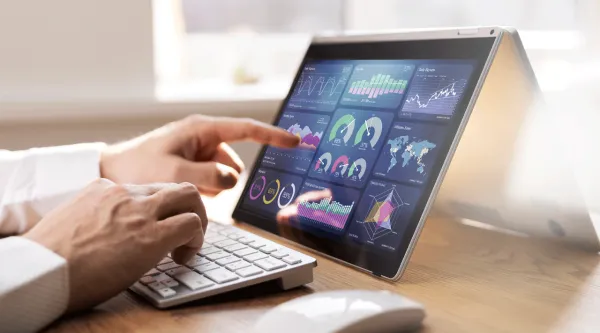Welcome to the first in a new blog series from CGI’s UK emerging technologies practice, exploring the latest tech trends and new innovation that we are generating.
Driving innovation
We have been part of the emerging technologies team for over a year now, and one of the most exciting things about working in this type of team is the access to innovation. In the realm of medical rehabilitation, innovation often springs from the desire to make therapy more engaging and motivating for patients. Our work on this emerged through CGI's SEEDS Programme which is an initiative that works with the UN to challenge the thinking around sustainability and health through research, innovation and technology.
What is Limbsync?
This is precisely what drove the development of "Limbsync," a CGI-developed gamified application. It is essentially an interactive application designed to enhance hand-eye coordination and fine motor skills in individuals undergoing hand mobility rehabilitation. We developed the current version as a bit of a pilot to demonstrate capability, the look and feel and that it works based on requirements. We continue to work with the client to update this and further extend features.
Developing Limbsync has been a rewarding experience; it's an engaging rhythmic solution that gamifies Mirror Therapy—a method used to treat stroke victims with motor impairments.
The Challenge
The challenge of creating an application that would not only facilitate hand-eye coordination but also make the rehabilitation process enjoyable and motivating for patients.
Setting Goals
- Engagement: the foremost goal was to create an application that patients would find genuinely engaging, making them look forward to their rehabilitation sessions.
- Coordination Enhancement: the app needed to provide a platform for patients to actively practice and improve their hand-eye coordination and fine motor skills.
- Progress Monitoring: the development of a progress tracking system was pivotal, enabling both patients and healthcare providers to assess the effectiveness of the therapy.
How does it work
In Limbsync, users can choose which hand they want to control, while the other hand mirrors the position and rotation of the selected hand. Musical data plays a crucial role in the game, triggering the creation of new Action Blocks that users must align their hands with.
Interactive Hand Tracking
By tricking the brain to influence their mobile arm, users can gesture and interact with incoming Action Blocks, represented as cuboids with symbols denoting the required hand gesture. These Action Blocks are generated in advance of the music's playback to ensure that the correct musical notes align with the user's hand position. Additionally, a delay feature allows clinicians to customize the game's difficulty by adjusting a single value. A longer delay time results in slower-moving Action Blocks, giving users more time to prepare.
Scoring System
Incorporating a scoring system, Limbsync is designed to provide users with feedback on their performance. For each successful movement and gesture, the user is awarded a score. This score can be used as a barometer to gauge their progress in manipulating their motor skills.
The Goals
Limbsync offers a scalable and reusable solution for the innovative use of Mirror Therapy in stroke victim rehabilitation.
- Increased Patient Engagement: Once rolled out patients will find the app highly engaging and be more motivated to participate in rehabilitation sessions. The gamified nature of the exercises will make therapy feel less like a chore and more like an enjoyable challenge.
- Improved Hand-Eye Coordination: The interactive exercises should lead to significant improvements in patients' hand-eye coordination and fine motor skills.
- Consistent Rehabilitation: The app should encourage patients to adhere to their rehabilitation routines consistently. Patients are more likely to complete their sessions, resulting in faster recovery times.
Conclusion
Limbsync is designed to demonstrate the transformative power of gamified rehabilitation. By combining engaging gameplay, precise hand tracking, and progress monitoring, it makes rehabilitation sessions not just effective but enjoyable. We’ll continue to refine and expand this innovative application where one day we can hopefully help individuals on their journey to recovery.
Get in touch to talk to us or our colleagues on these types of emerging technologies!








